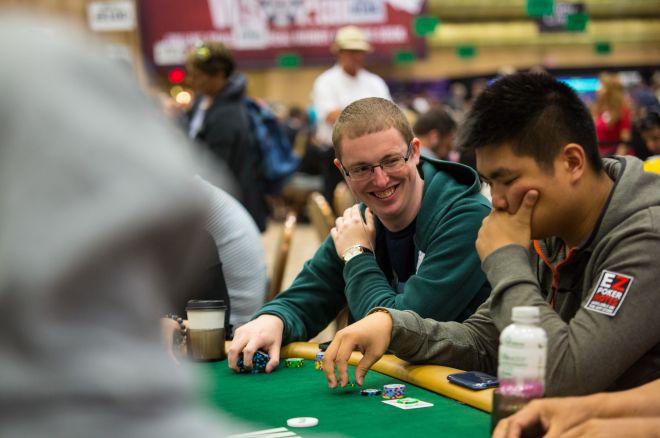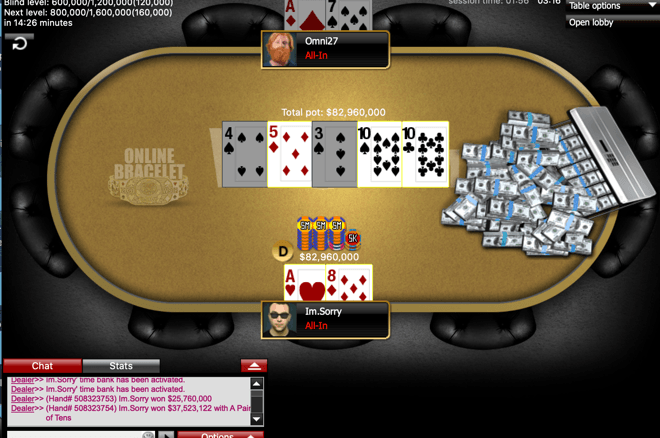Ryan's Poker Table #4
- The Great Escape offers the widest selection of poker tables all at incredible prices. You'll find it's just what you need to have more fun at home. Visit a store near you today to see for yourself. You will find The Great Escape retail locations in Chicago, Cleveland, Rockford, South Bend, Peoria and Quad Cities.
- Ryan's Poker Table #3. Ryan's Poker Table #3. Saved by Eric Werley. Woodworking Kit For Kids Woodworking In An Apartment Woodworking With Resin Woodworking Square Woodworking Table Plans Woodworking Shows Woodworking Jointer Woodworking Projects That Sell Woodworking Basics.
- Berner Billiards 60 Round Poker Table. Featured in an Antique Walnut Finish. The top and base of selected hardwoods and veneers and designer pedestal with solid wood ball & claw foot. Includes 2 removable foam cushioned felt poker tops in Green & Red. Padded black vinyl outer rail accentuated by brass accents / nail heads. Stainless steel drink holders.
The second event of the 2019 Poker Masters saw the game switched to Pot-Limit Omaha as 62-entrants took a seat inside the PokerGO Studio. After 17 full levels of play, Ryan Laplante finished as the chip leader with 2,540,000 in chips heading into Wednesday’s PokerGO streamed Event #2 final table.
The set includes the 2-in-1, 48 in. Dia game table with 4 matching chairs. The reversible dining table surface quickly turns into a felt-lined game table surface with an easy flip of the table top. The poker surface has space for 8 players and includes built-in drink holders and chip slots. Costway 48' Green Octagon 8 Player Four Fold Folding Poker Table Top & Details. Sale ends in 3 days. Save $42.00 (15%) Sale $.
After opening the 2019 Poker Masters with one of the biggest $10,000 buy-in tournaments the PokerGO Studio has seen, the numbers decreased as the cards increased for Event #2. With the game switching from No-Limit Hold’em to Pot-Limit Omaha, a new crop of players took a seat and created a prize pool of $620,000.
With the action flowing throughout the day, the redraw to the final two tables immediately saw a flurry of eliminations as Manig Loeser would be the eventual bubble boy in tenth place. Anthony Zinno (9th) and Brent Roberts (8th) all fell before the final seven redrew to one table, and although action stalled for a little, eventually it would be Damjan Radanov eliminated in seventh place to conclude play for the day.
The final six players are currently all guaranteed a $37,200 payday, but all eyes will be set on the first-place prize of $186,000 and the title of Event #2 champion. The player best positioned to claim that first prize is chip leader Ryan Laplante. Not a regular in these High Roller tournaments, Laplante is taking advantage of his opportunity after winning several key hands down the stretch to ascend to the top of the leaderboard. If Laplante can win this event, it will be just $4,000 shy of his biggest career cash when he won the 2016 WSOP Event #12: $565 Pot-Limit Omaha bracelet for $190,328.
Sitting second in chips is Thai Ha who finished in eighth-place in Event #1. Ha held the chip lead – along with Laplante – for the latter stages of the tournament, but after losing several pots to Laplante and others, he slipped down to finish with 1,730,000. Although Ha is one of the lesser known players at the final table, he is fresh off a WSOP Europe where he collected six cashes including a second-place finish in the €25,500 No Limit Short Deck Hold’em – High Roller for €457,964.
Third overall is the defending Poker Masters Purple Jacket holder Ali Imsirovic. Although he arrived to the final table of seven players as one of the short stacks, he rode a mini-heater and eliminated Radanov to finish with 1,596,000 in chips and is in position to collect points to make a run at back-to-back Purple Jacket victories. In fourth place is John Riordan with 990,000 in chips courtesy of a double through Ha a few hands before play concluded. Riordan has been a regular in the Pot-Limit Omaha tournaments held in the PokerGO studio, but this will be his first cash in either of the U.S. Poker Open or Poker Masters series’.

Rounding out the final spots at the final table are Chance Kornuth and Tim McDermott with 545,000 and 410,000 respectively. Like Ha, Kornuth already collected a cash in Event #1 when he finished in second-place to Isaac Baron for a $164,900 payday. Already a regular in the PokerGO studio with appearances on Poker After Dark and other shows, Kornuth is making a run at becoming the 2019 Poker Masters Purple Jacket winner as a fifth-place finish sees him tied with Baron, while a fourth-place finish gives him the lead – and barring a Ha victory in Event #2 – he will be the points leader heading into Event #3. McDermott is another player new to the High Roller scene in the PokerGO Studio, but after 10 cashes during the WSOP which included a second-place finish in the $1,500 Dealer’s Choice, he will be hoping to spin up his 14-big blind stack to collect the first-place prize that is nearly twice his biggest career score.
| Seat | Name | Country | Chip Count |
| 1 | Chance Kornuth | United States | 545,000 |
| 2 | John Riordan | United States | 990,000 |
| 3 | Thai Ha | Vietnam | 1,730,000 |
| 4 | Ryan Laplante | United States | 2,540,000 |
| 5 | Ali Imsirovic | Bosnia and Herzegovina | 1,595,000 |
| 6 | Tim McDermott | United States | 410,000 |
The button is on Thai Ha, and there is 26:04 remaining in Level 18 with blinds at 15,000-30,000 and a 30,000-big blind ante.
The Event #2: $10,000 Pot-Limit Omaha final table begins at 12 p.m. (PT) on Wednesday, November 6, with action continuing until the Event #2 champion is crowned. Follow every hand when the PokerGO coverage begins at 1 p.m. (PT) / 4 p.m. (ET).
Follow the final table exclusively on PokerGO through your favorite devices and in the embedded player below. Can’t watch live? Catch the action on-demand at your leisure. New to PokerGO? Subscribe right now.
Step 1 - Materials and Tools
$72 |
$26 |
$21 |
$48 |
$14 |
$16 |
$43 |
$9 |
$3 |
$5 |
$3 |
$5 |
$7 |
$8 |
$5 |
$7 |
$16 |
$306 |
- Circular Saw
- Hand held sander
- Electric Staple Gun
- Plate joiner kit
Step 2 - Cutting for each side of octogan
Step 3 - Cutting edge piece/molding
Step 4 - Gluing up each side of octogan
Step 5 - Cutting each side to correct length and angle
Poker Table Tops
Step 6 - Cutting out for cup holder
Step 7 - Cutting out for chips storage
Step 8 - Dry Assembly
Step 9 - Gluing up final assembly
Step 10 - Cut plywood base
Step 11 - Cutting out for cup-holders in plywood base
Folding Poker Table
Step 12 - Router the top edges
Step 13 - Cut out centre octagon
Custom Poker Tables
Step 13 - Making the foot of the table.
Step 14 - Making the pedestal
Step 15 - Finishing




